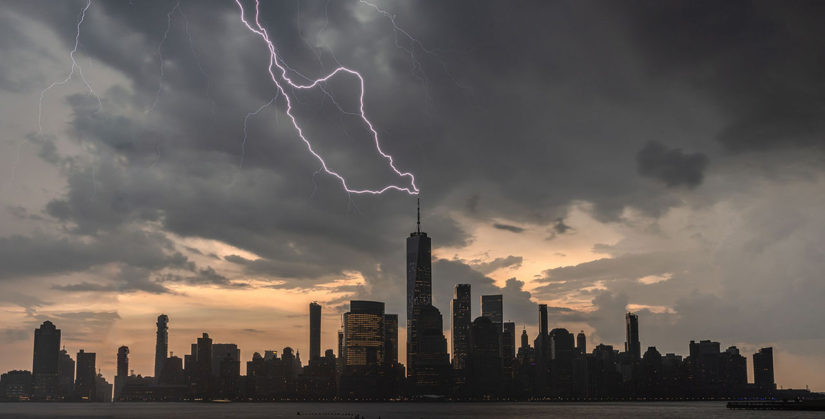Lightning Protection System (LPS)
A lightning protection system includes a network of air terminals, bonding conductors, and ground electrodes designed to provide a low impedance path to ground for potential strikes. Lightning protection systems are used to prevent lightning strike damage to structures.
Benefits of lightning protection
It’s clear that commercial lightning protection is something that any business can benefit from. In order to better understand the problem and the risks, it helps to know how lightning and lightning protection works. Lightning is simply an electrostatic discharge that can occur from cloud-to-cloud, inside clouds, and cloud to ground. The problem is when a lightning strike makes direct contact with a building. The ensuing surge of electricity from a lightning strike can spread throughout the building damaging fuses and potentially any electronic devices that were plugged in at the time.
A commercial lightning protection system is able to safely transfer the electrical energy from a lightning strike away from the building and into the ground where it is safely discharged. The purpose of a commercial lightning protection system is not to completely prevent lightning from striking, this isn’t really possible. Rather, the purpose is to provide a path of low resistance for the lightning to travel through without causing damage to the building. The major components of a commercial lightning protection system include lightning rods, conductor cables, and grounding rods.
It is important to make sure that a commercial lightning protection system complies with all codes and standards of the Lightning Protection Institute, National Fire Protection Association, and Underwriters Laboratories.



